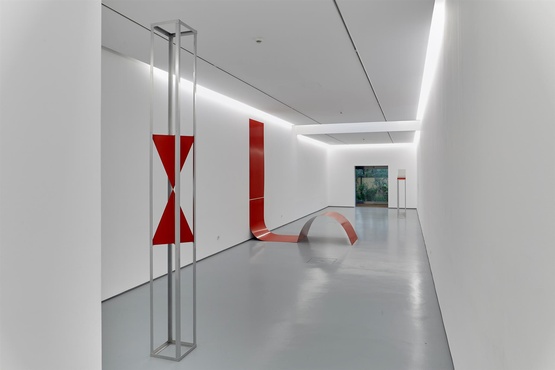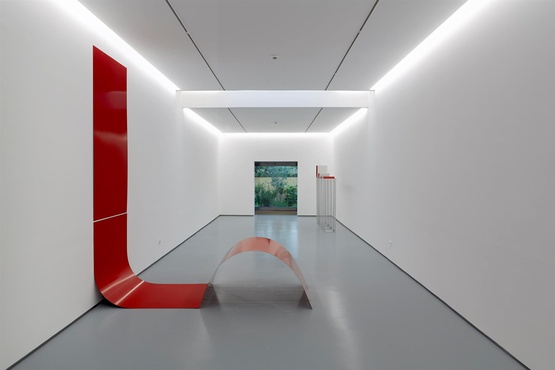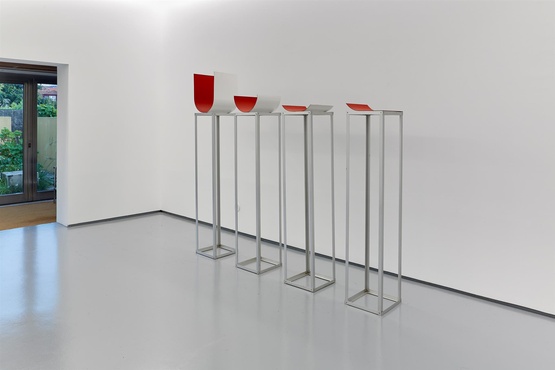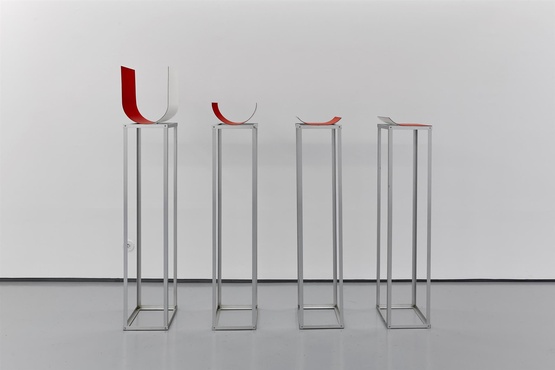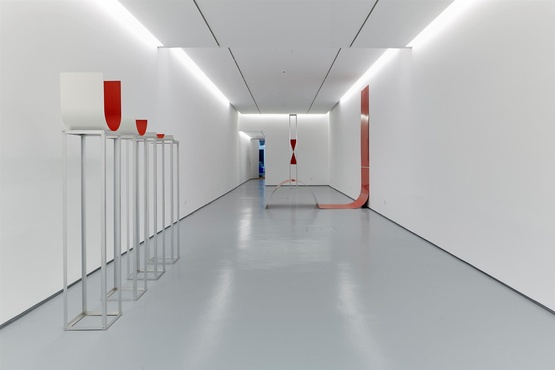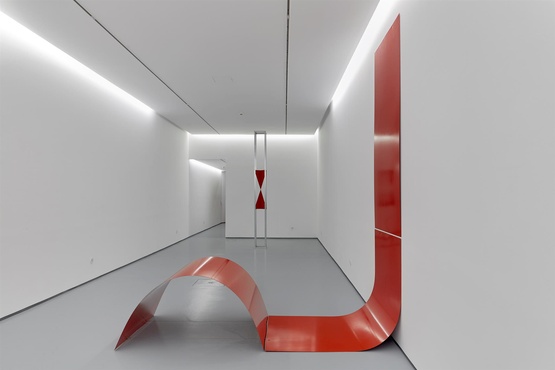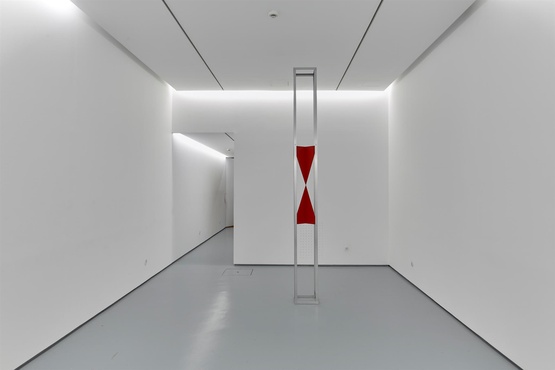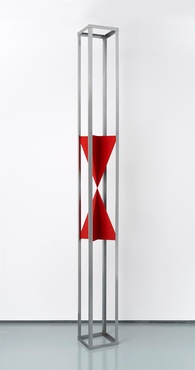Opening: 21 April, 4 pm
Three sculptures: Untitled (1968), Untitled (1969) and Curvatura [Curvature] (1971). Three moments that condense a creative period of major importance in the path of the sculptor Zulmiro de Carvalho. In the tension between American minimal art and new British sculpture, these sculptures constitute a clear example of the formalization of methods that, assertively transgress modern sculpture's canons, still in use at that time and context.
In these sculptures, the drawing of emptiness is as important as the shape's presence. There lies a substantive part of its intrinsic quality. Zulmiro de Carvalho has always known how to work with the sculptures' inner space in articulation with the surrounding physical space. This dialogue evokes Art History itself and argues the kind of space that these works inhabit. And today, with its almost fifty years, these shapes keep its unique circumstances of relevance and effectiveness. Such as all the gestures that last, because they are necessary.
Zulmiro de Carvalho
Valbom, Portugal, 1940. Lives and works in Gondomar, Portugal.
Simple shapes, sober volumes, rigorous constructions, smooth and well-groomed surfaces, constitute the vocabulary of Zulmiro de Carvalho, an artist who, since the mid-sixties, makes sculpture and drawing, practices directed by a constant research on forms and plastic language. His sculptures for outdoor spaces are well-known.
In London, between 1971 and 1973, he attended a postgraduate course at St. Martin's School of Art, prominent place in the sculpture of the 70s where teachers like Philip King, Anthony Caro and William Tucker were teaching. There, the artist would come to consolidate certain elements of a minimalist grammar, already present in his precedent work: the conceptual rigour, simple and repetitive shapes, geometric and modular systems, the refusal of pedestals, the perceptual environment, appreciation for industrial materials, and the abandonment of manual execution. Numerous materials arise along the activity of the sculptor, shaping his expressive concerns: first metal, then stone (granite and marble), wood, iron and corten steel.



